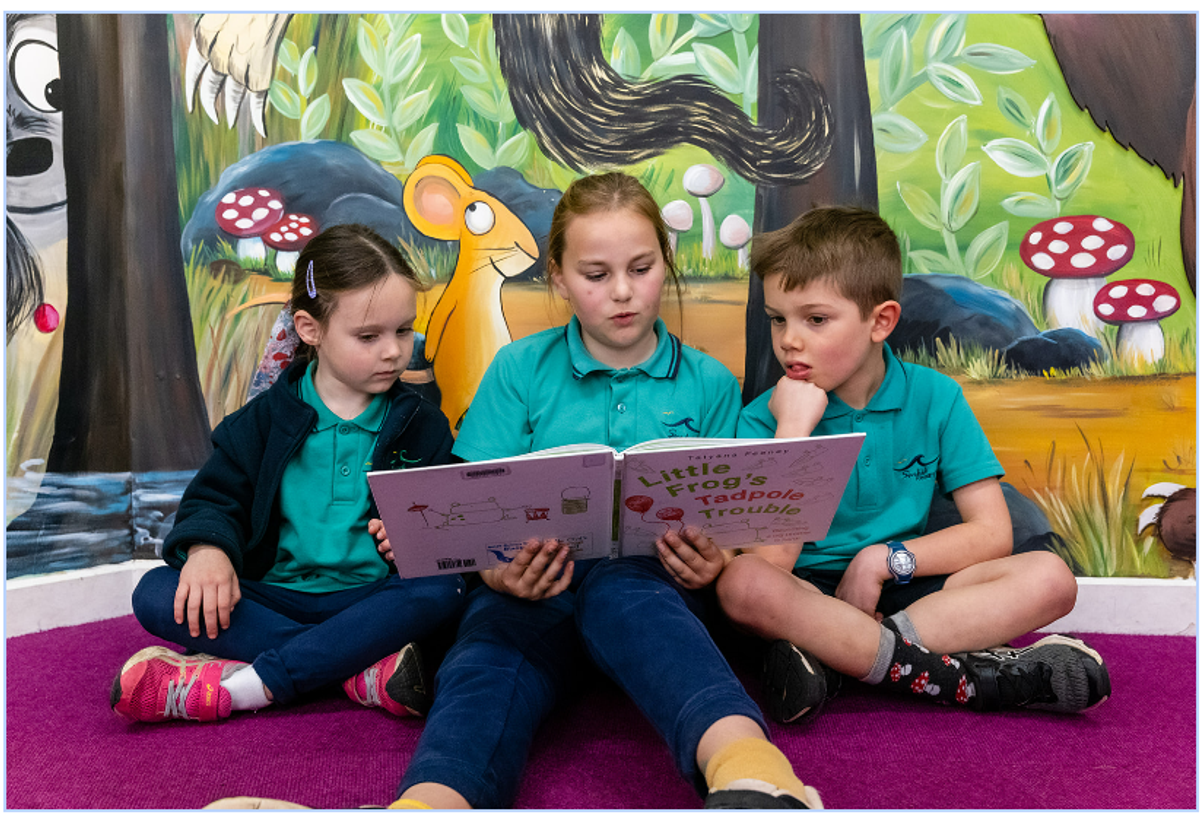Teaching & Learning Page

Teaching and Learning Spotlight- Literacy at Surfside
As discussed in the last newsletter, research has shown that there are six key components that contribute to successful reading. Because of the importance of these components, they have become known as ‘The Big Six’:
- oral language
- phonological awareness
- phonics
- vocabulary
- fluency
- comprehension
This week, we are going to focus on the foundation of all literacy skills, oral language.
Oral language
How does oral language contribute to reading success?
Oral language is the foundation of all literacy skills. If children experience rich oral language when they are young by talking with, and listening to adults and other children, they will have a large ‘bank’ of words that they understand when used in spoken communication. Children will have heard and joined in word play, rhyming and be aware of the sounds of English. They will be familiar with lots of different sentence types and understand how language can change in different situations. They understand that words have meanings and that we use language to communicate information, ideas, feelings and thoughts.
What can parents can do at home to encourage oral language?
Parents can support children in their oral language development by providing a variety of opportunities for children to listen and talk for different purposes. Here are some of the best ways parents can encourage oral language:
- Talk to your child and listen responsively. Ask and answer questions.
- Read aloud to your child at least once a day. Good books expose children to vocabulary and sentence structures that they won’t hear in everyday situations. Research has shown that reading aloud to children is a major factor in their success in learning to read at school.
- Talk about the books you read aloud with your child. Ask your child about the characters, plot or setting; the themes and ideas raised by the book; topics they’d like to read, or learn more about as a result of reading aloud.
How do we support development of oral language at Surfside?
- Use accurate, descriptive, positional language, and precise terminology. Provide clear feedback to facilitate understanding.
- Check for students’ receptive language skills for those who have trouble concentrating, look confused, answer questions inappropriately, partially follow directions; or wait until others have responded before they respond.
- Adjust language according to student need as confusion can result from unfamiliar language structures and “lexical density” of the more formal language of school. Use simple, direct language, and incorporate strategies like emphasising important words (verbs).
- Active listening requires selective and sustained attention, working memory, cognitive processing, and information storage and recall mechanisms. For older students, teaching note-taking skills from oral input also develops listening skills.
- Elaborate on student’s language by adding new information, questioning, repetition, and other communication skills such as taking turns and eye contact.
- One-to-one conversations can model more sophisticated structures and vocabulary to develop appropriate turn-taking, intonation, expression and eye contact.
- Explore and retell books with open-ended questions about the author/pictures to encourage language and broader cognitive development, building sequencing skills, practice different tenses and use time-related connecting words.
- Picture books build the concepts of letter, word and sentence, familiarity with upper and lowercase letters and punctuation. Expose students to more sophisticated vocabulary and syntactic structures to promote discussion about diverse and important topics.
- As children mature, thinking out loud becomes progressively quieter until it becomes thought. Thinking aloud reveals how to work through a task or problem.
- Explicit teaching of new vocabulary is incorporated into all subject areas. Targeting a particular aspect of oral language in each lesson increases the opportunities for practice.

